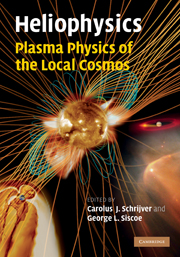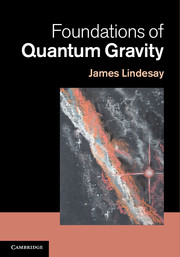Refine listing
Actions for selected content:
16950 results
CHAPTER II - FLAMSTEED
-
- Book:
- The Royal Observatory Greenwich
- Published online:
- 05 October 2014
- Print publication:
- 22 August 2013, pp 25-59
-
- Chapter
- Export citation
Preface
-
- Book:
- The Royal Observatory Greenwich
- Published online:
- 05 October 2014
- Print publication:
- 22 August 2013, pp 5-6
-
- Chapter
- Export citation
Frontmatter
-
- Book:
- The Royal Observatory Greenwich
- Published online:
- 05 October 2014
- Print publication:
- 22 August 2013, pp 1-4
-
- Chapter
- Export citation
INDEX
-
- Book:
- The Royal Observatory Greenwich
- Published online:
- 05 October 2014
- Print publication:
- 22 August 2013, pp 317-320
-
- Chapter
- Export citation
CHAPTER IX - THE MAGNETIC AND METEOROLOGICAL DEPARTMENTS
-
- Book:
- The Royal Observatory Greenwich
- Published online:
- 05 October 2014
- Print publication:
- 22 August 2013, pp 228-250
-
- Chapter
- Export citation
CHAPTER VIII - THE ALTAZIMUTH DEPARTMENT
-
- Book:
- The Royal Observatory Greenwich
- Published online:
- 05 October 2014
- Print publication:
- 22 August 2013, pp 205-227
-
- Chapter
- Export citation
LIST OF ILLUSTRATIONS
-
- Book:
- The Royal Observatory Greenwich
- Published online:
- 05 October 2014
- Print publication:
- 22 August 2013, pp 9-12
-
- Chapter
- Export citation

Heliophysics: Plasma Physics of the Local Cosmos
-
- Published online:
- 05 August 2013
- Print publication:
- 09 July 2009

Foundations of Quantum Gravity
-
- Published online:
- 05 July 2013
- Print publication:
- 16 May 2013

Rotating Relativistic Stars
-
- Published online:
- 05 July 2013
- Print publication:
- 11 February 2013
3 - Stellar interiors
-
- Book:
- Astrophysics through Computation
- Published online:
- 05 June 2014
- Print publication:
- 28 June 2013, pp 59-103
-
- Chapter
- Export citation
6 - Binaries and clusters
-
- Book:
- Astrophysics through Computation
- Published online:
- 05 June 2014
- Print publication:
- 28 June 2013, pp 186-219
-
- Chapter
- Export citation
Frontmatter
-
- Book:
- Astrophysics through Computation
- Published online:
- 05 June 2014
- Print publication:
- 28 June 2013, pp i-iv
-
- Chapter
- Export citation
Index
-
- Book:
- Astrophysics through Computation
- Published online:
- 05 June 2014
- Print publication:
- 28 June 2013, pp 369-373
-
- Chapter
- Export citation
Contents
-
- Book:
- Astrophysics through Computation
- Published online:
- 05 June 2014
- Print publication:
- 28 June 2013, pp v-vi
-
- Chapter
- Export citation
9 - Cosmic structures
-
- Book:
- Astrophysics through Computation
- Published online:
- 05 June 2014
- Print publication:
- 28 June 2013, pp 309-356
-
- Chapter
- Export citation
5 - General relativity and applications
-
- Book:
- Astrophysics through Computation
- Published online:
- 05 June 2014
- Print publication:
- 28 June 2013, pp 143-185
-
- Chapter
- Export citation
8 - Galaxies
-
- Book:
- Astrophysics through Computation
- Published online:
- 05 June 2014
- Print publication:
- 28 June 2013, pp 263-308
-
- Chapter
- Export citation
7 - Astrophysical plasmas
-
- Book:
- Astrophysics through Computation
- Published online:
- 05 June 2014
- Print publication:
- 28 June 2013, pp 220-262
-
- Chapter
- Export citation
2 - Stellar atmospheres
-
- Book:
- Astrophysics through Computation
- Published online:
- 05 June 2014
- Print publication:
- 28 June 2013, pp 29-58
-
- Chapter
- Export citation
